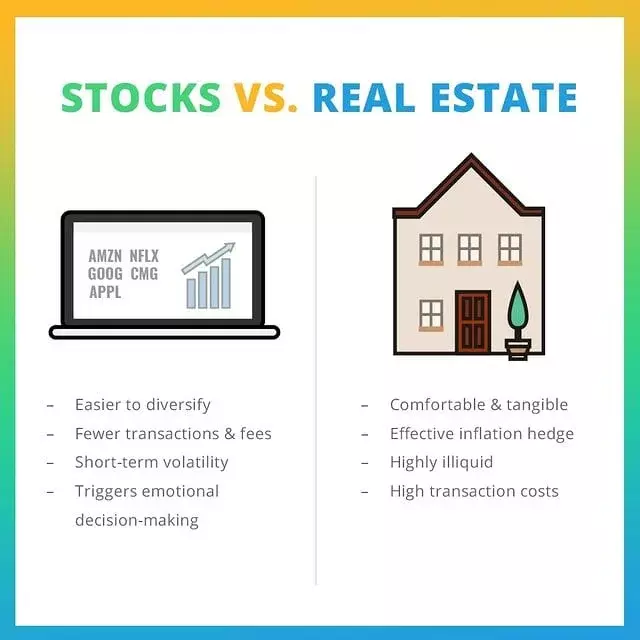Introduction : Tips For Investing
When it comes to investing, there is no one-size-fits-all approach. However, there are some general Tips For Investing that can help you get started on the right foot.
- Start early. The sooner you start investing, the more time your money has to grow.
- Invest regularly. Consistent investing can help you build your wealth over time.
- Invest in a diversified mix of assets. Diversification helps reduce risk and can improve returns.
- Have a long-term perspective. Investing is a marathon, not a sprint. focus on your long-term goals and stay the course.
- Keep costs low. High fees can eat into your investment returns. Look for ways to keep your costs down.
- Review your investments regularly

What is Investing?
Investing is putting your money into something with the expectation of earning a return on your investment. Many people invest in stocks, which are shares of ownership in a company. When you buy a stock, you become a part-owner of the company. Other people invest in bonds, which are like IOUs: you lend money to a company or government and they promise to pay you back, with interest. There are many different types of investments, and you can choose to invest in just one type or in a mix of different types.
The most important thing to remember when investing is that there is always some risk involved. That’s because you’re never 100% certain that your investment will go up in value. (In fact, investments can go down in value as well as up.) But over the long term, most investments tend to go up in value, which is why investing can be a good way to grow your money.
The Benefits of Investing
There are many benefits of investing in stocks, including the potential to earn a high return on investment, the ability to diversify your investment portfolio, and the opportunity to participate in the growth of the economy. Here in this article we will provide the best Tips For Investing.
While there are no guarantees when it comes to investing in the stock market, the potential rewards can be great. Over the long-term, stocks have outperformed other asset classes such as bonds and gold. In fact, the average annual return for stocks has been around 10% since 1926. This means that if you invested $10,000 in stocks in 1926, your investment would be worth over $41 million today.
Of course, stock prices can go up and down in the short-term, and there is always the risk of losing money. However, if you are investing for the long-term, the historical performance of stocks suggests that they are a wise investment.

How to get started with Investing : Tips For Investing
If you’re like most people, you probably think of investing as something that only wealthy people do. But the truth is, anyone can start investing with just a little bit of money. In fact, you don’t need a lot of money to get started. You can start investing with as little as $25.
There are a lot of different ways to invest your money. You can invest in stocks, bonds, mutual funds, real estate, and more. But how do you know which investment is right for you? And how do you get started?
Here are a few tips to help you get started with investing:
1. Determine your goals.
Before you start investing, you need to figure out what your goals are. Are you investing for retirement? To send your kids to college? To buy a new car or house? Once you know your goals, you can start to figure out which investments are right for you.
2. Do your research.
Do proper research before investing, its all about your hard earned money after all. If you invest even 50% of your money with proper research, you can see wonders in the stock Market…!
Types of Investments
There are many different types of investments that people can make. Some of the most common include stocks, bonds, mutual funds, and real estate. Each type of investment has its own set of risks and rewards.
1. Stocks
Stocks are one of the most popular types of investments. They are ownership interests in a company and can be bought and sold on the stock market. Stocks offer the potential for high returns, but they are also risky.
2. Bonds
Bonds are another popular type of investment. They are IOUs issued by corporations or governments and typically pay periodic interest payments. Bonds are generally less risky than stocks, but they also offer lower returns.
3. Mutual funds
Mutual funds are another common type of investment. They are portfolios of stocks or bonds managed by professional money managers. Mutual funds offer investors the ability to diversify their investments and reduce risk.
4. Real estate
Real estate is another popular type of investment. It can be either commercial or residential property. Real estate offers the potential for high returns, but the risk and capital required for this type of investment is huge.

Investment Strategies
When it comes to investing, there are many different strategies that can be employed in order to try and achieve success. There is no one-size-fits-all approach when it comes to investing, and what works for one person may not necessarily work for another. However, there are some general tips and strategies that can be followed in order to give yourself the best chance of success.
One of the most important things to do when it comes to investing is to have a clear and concise plan. This plan should outline your goals, how you plan on achieving them, and what you are willing to risk in order to reach your goals. Without a plan, it can be very easy to make impulsive and emotionally-driven decisions that can end up costing you dearly in the long run.
You can check all the important trading strategies on our website. Check out the best price action trading strategy and contribution margin formula guides.
Diversifying Your Portfolio
When it comes to investing, one of the smartest things you can do is to diversify your portfolio. By investing in a variety of assets, you can minimize your risk and maximize your chances of achieving your financial goals.
There are many different ways to diversify your portfolio. One way is to invest in a variety of different asset classes, such as stocks, bonds, and real estate. Another way to diversify is to invest in a variety of different sectors, such as healthcare, technology, and consumer goods.
No matter how you choose to diversify your portfolio, the important thing is to make sure that you are diversified. Diversification is one of the best ways to reduce risk and improve your chances of achieving your financial goals.

Managing Investment Risk
When it comes to investments, there is no such thing as a guaranteed return. That’s why it’s important to understand and manage investment risk.
There are two types of risk: systematic and unsystematic. Systematic risk is the risk that’s inherent to the entire market, and it can’t be diversified away. Unsystematic risk is specific to a particular security or sector, and it can be diversified away.
Investors can manage risk by diversifying their portfolios and by hedging. Diversification is a way of spreading out your investments so that you’re not too exposed to any one security or sector. Hedging is a way of offsetting the risk of one investment by investing in another that’s likely to move in the opposite direction.
Investors should always keep an eye on both the level of risk and the potential return of their investments. It’s important to remember that higher-risk investments can also offer higher returns.
Tax considerations for Investors
When it comes to taxes, there are a few things that investors need to keep in mind. Here are a few tax considerations for investors to keep in mind:
1. Capital Gains Tax:
Capital gains tax is a tax on the profit from the sale of an asset. The tax rate for capital gains can vary depending on the type of asset and how long it was held.
2. Dividend Tax:
Dividends are taxable as income at the investor’s marginal tax rate.
3. Interest Tax:
Interest income is taxable as income at the investor’s marginal tax rate.
4. Property Tax:
Property taxes are typically levied by local governments on real estate.
5. Estate tax:
Estate tax is a tax on the transfer of assets at death. The tax rate for estate tax can vary depending on the value of the estate.
6. Gift Tax:
Gift tax is a tax on the transfer of assets during life. The tax rate for this tax varies from 22% to 30% depending upon the cost of gift.

Wrap up : Tips For Investing
Whether you’re a first-time investor or a seasoned pro, there are always new things to learn when it comes to investing. In this article, we’ve compiled a few tips that should help you make the most of your investments. Remember, though, that investing always involves some degree of risk, so please do so at your own discretion. Thanks for reading! You will find a concise plan for planning your investments below. Do read more about Stock Market and Crypto Market here.
Here are a few concise Tips For Investing to wrap up the best Investment guide:
- Review your portfolio and make sure you are still invested in companies that you believe in. If not, it may be time to make some changes.
- Consider investing in some new companies or sectors that you have been watching. 2020 could be a great year to diversify your portfolio.
- Stay disciplined with your investing. Don’t get caught up in the hype of the market and make rash decisions.
- Have a plan for your investments. Know what your goals are and stick to them.
- Review your investment expenses. Make sure you are not paying too much in fees and commissions.
- Stay diversified. Don’t put all your eggs in one
- Manage risk and Investment with a proper risk to reward ratio set strictly.
